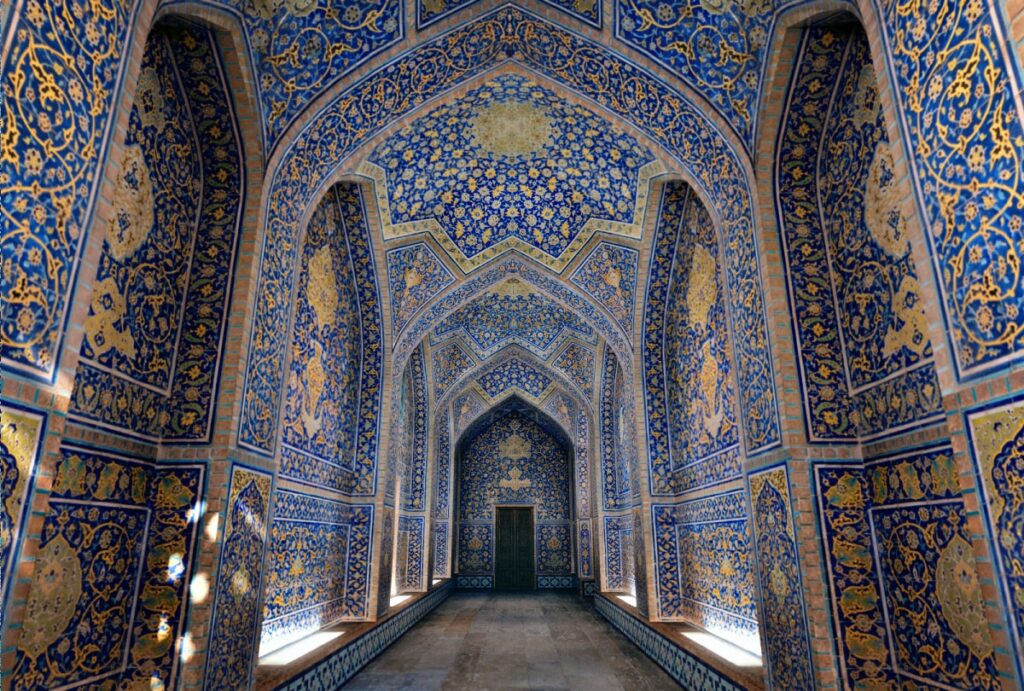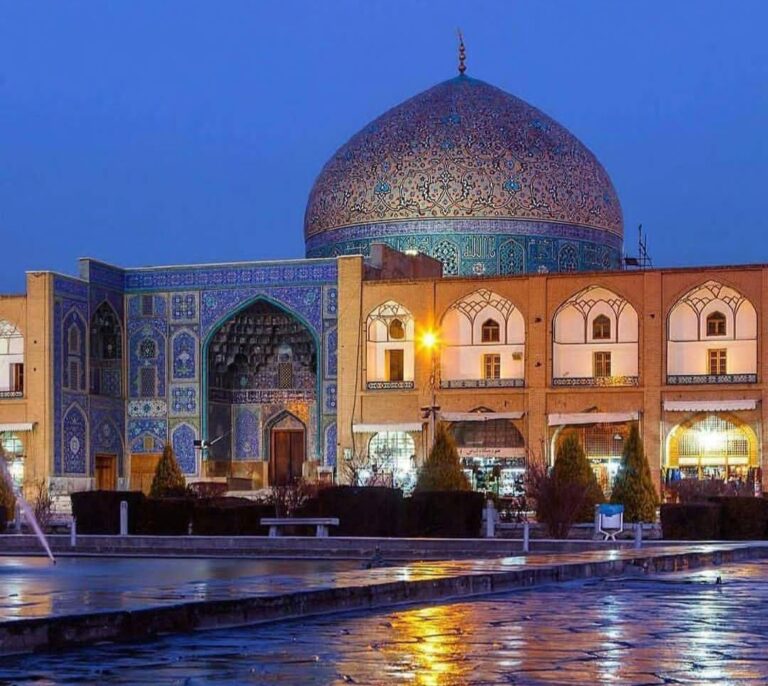
Sheikh Lotfollah Mosque is one of the masterpieces of Safavid architecture and among the most beautiful historical monuments in Iran. Located in Naqsh-e Jahan Square, Isfahan, this mosque was built by the order of Shah Abbas I in the early 17th century. Unlike other grand mosques, Sheikh Lotfollah Mosque lacks a minaret and a large courtyard, yet its exquisite tilework, unique dome, and artistic lighting make it one of the finest examples of Islamic architecture.
History of Sheikh Lotfollah Mosque
The mosque was commissioned by Shah Abbas I in honor of Sheikh Lotfollah Maysi Ameli, a prominent Shia scholar. Construction began in 1603 CE and was completed in 1619 CE. This mosque was designed as a private place of worship for the royal family, which explains the absence of a minaret and a public prayer hall, distinguishing it from other grand mosques.
Architectural Features of Sheikh Lotfollah Mosque
Sheikh Lotfollah Mosque is considered a masterpiece of Safavid architecture, renowned for its intricate tilework, elegant design, and spiritual ambiance. Some of its most significant features include:
1. A Magnificent and Unique Dome
One of the most striking aspects of the mosque is its extraordinary dome, adorned with delicate mosaic tiles in cream, turquoise, and blue hues. Throughout the day, sunlight changes the color of the dome from beige to pink and violet, creating a mesmerizing visual effect.
2. Stunning Tilework and Geometric Patterns
The detailed tilework of the mosque showcases floral motifs, arabesques, and Quranic inscriptions, with an impressive combination of turquoise, lapis lazuli, and golden hues, giving the space a celestial beauty.
3. Remarkable Natural Lighting
One of the most fascinating aspects of the mosque is its ingenious lighting design. Light enters through the latticed windows around the dome, illuminating the interior with a soft and mystical glow, enhancing the spiritual ambiance.
4. A Unique Entrance and Twisting Corridor
Unlike most mosques, the entrance of Sheikh Lotfollah Mosque does not lead directly to the main prayer hall. Instead, a curved corridor is designed to align the mosque with the qibla (direction of prayer) while also adding a sense of mystery and reverence to the experience.
The Cultural and Artistic Significance of Sheikh Lotfollah Mosque
Sheikh Lotfollah Mosque is not just a place of worship; it is a symbol of Safavid artistry and architectural ingenuity. Its timeless design has inspired architects and artists for centuries and remains one of Isfahan’s most important tourist attractions.
Conclusion
Sheikh Lotfollah Mosque is a masterpiece of Safavid architecture, distinguished by its spectacular dome, intricate tilework, and unique lighting design. Beyond its religious and cultural value, the mosque stands as an icon of Persian and Islamic art, continuing to inspire architects and art enthusiasts worldwide.


No comments yet.